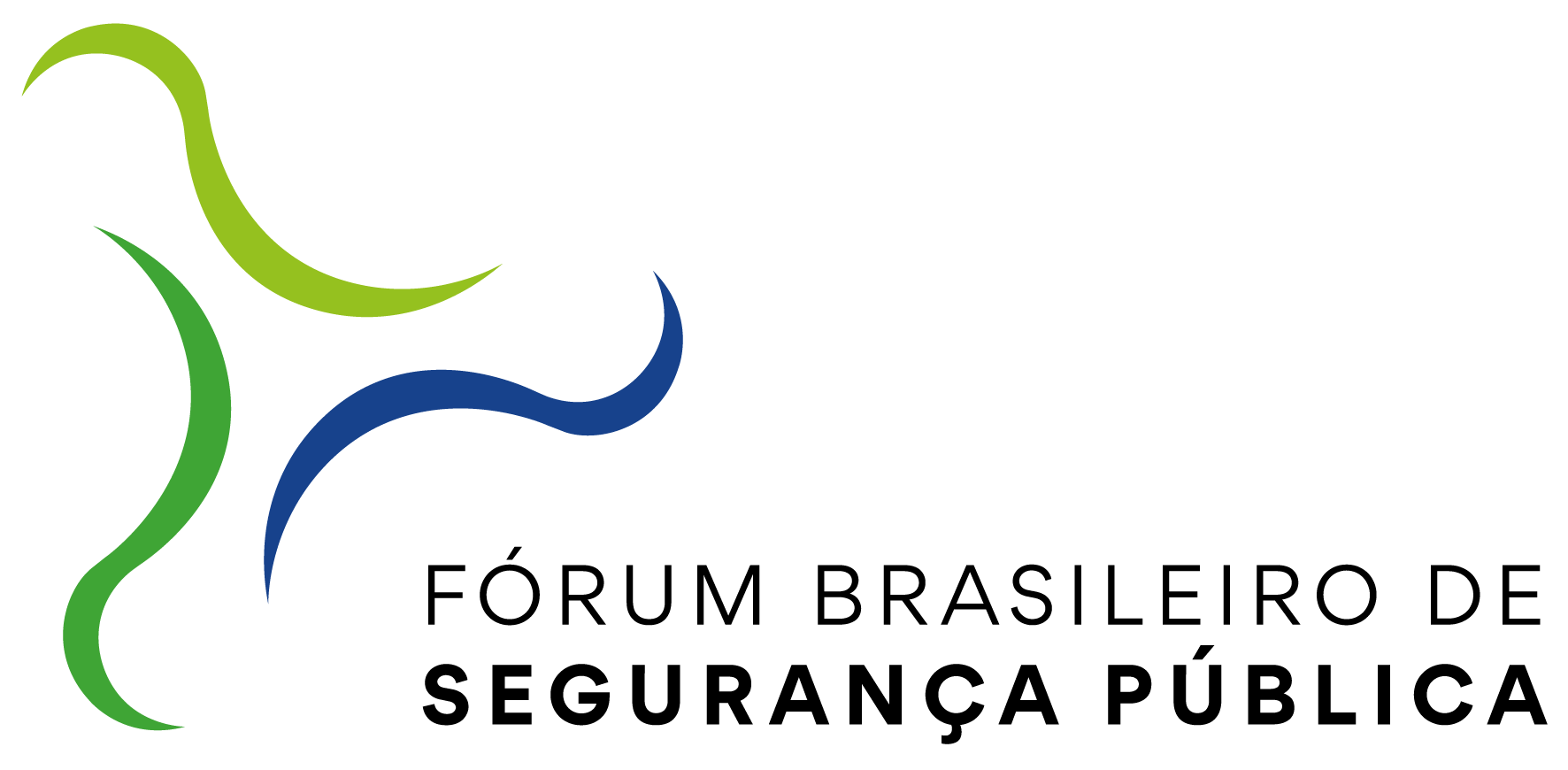Systematic review of effectiveness indicators in forensic DNA databases
DOI:
https://doi.org/10.31060/rbsp.2023.v17.n1.1527Keywords:
DNA database, effectiveness, performance, public administration, systematic reviewAbstract
The purpose of this article was to identify in the literature how effectiveness has been measured in forensic DNA databases. The method used was the systematic review of empirical articles and review articles, between the years 1997 and 2020. The results showed that the effectiveness of DNA databases has been measured by different indicators, depending on the level of analysis, being the number of: matches, hits, investigations assisted, cases resolved, individuals arrested or convicted. The relevance of this research is due to the need to establish the variables that are related to the process of genetic confrontation, and how they can contribute to the construction of inferential models of analysis. However, an examination is needed beyond the scope of the investigation, so that the cases are monitored from their registration until the final decision in the judicial process, allowing for greater accuracy criteria in the evaluation of the related public services. For this, an integrated information structure is required. With this systematic review and proposition of a research agenda, this research contribute to the investigated theme, in the light of the Public Administration and more specifically of the Administration of Justice.
Downloads
References
AMANKWAA, A. O. Forensic DNA retention: Public perspective studies in the United Kingdom and around the world. Science & Justice, v. 58, n. 6, p. 455-464, 2018. DOI: https://doi.org/10.1016/j. scijus.2018.05.002.
AMANKWAA, A. O.; MCCARTNEY, C. The UK National DNA Database: Implementation of the Protection of Freedoms Act 2012. Forensic Science International, v. 284, p. 117-128, 2018. DOI: https://doi. org/10.1016/j.forsciint.2017.12.041.
AMANKWAA, A. O.; MCCARTNEY, C. The effectiveness of the UK National DNA database. Forensic Science International: Synergy, v. 1, p. 45-55, 2019. DOI: https://doi.org/10.1016/j.fsisyn.2019.03.004.
BASTO, L. E. P.; NEVES, O. H. S.; PEREIRA, P. R.; COSTA, R. S.; LAREIRO, V. P. Organizações públicas brasileiras: a busca da eficiência, da eficácia ou da efetividade?. Revista de Administração Pública, v. 27, n. 4, p. 142-146, maio 1993. ISSN 1982-3134.
BELL, C. Concepts and possibilities in forensic intelligence. Forensic Science International, v. 162, n. 1-3, p. 38-43, 2006. DOI: https://doi.org/10.1016/j.forsciint.2006.06.030.
BIEBER, F. R. Turning base hits into earned runs: Improving the effectiveness of forensic DNA data bank programs. Journal of Law, Medicine and Ethics, v. 34, n. 2, p. 222-233, 2006. DOI: https://doi. org/10.1111/j.1748-720X.2006.00029.x.
BITTENCOURT, E. A.; IWAMURA, E. S. M. Brazilian DNA database – Establishment, legislation and accreditation. Forensic Science International: Genetics Supplement Series, v. 7, n. 1, p. 422-423, 2019. DOI: https://doi.org/10.1016/j.fsigss.2019.10.036.
BOONDERM, N.; SURIYANRATAKORN, D.; WONGVORAVIVAT, C.; SANGPUENG, S.; NETTAKUL, A.; WAIYAWUTH, W. Effectiveness of CIFS DNA database in Thailand. Forensic Science International: Genetics Supplement Series, v. 6, p. e585-e586, 2017. DOI: https://doi.org/10.1016/j. fsigss.2017.09.220.
BRUENISHOLZ, E.; VANDENBERG, N.; BROWN, C.; WILSON-WILDE, L. Benchmarking forensic volume crime performance in Australia between 2011 and 2015. Forensic Science International: Synergy, v. 1, p 86-94, 2019. DOI: https://doi.org/10.1016/j.fsisyn.2019.05.001.
BURROWS, J.; TARLING, R. Measuring the impact of forensic science in detecting burglary and autocrime offenses. Science & Justice, v. 44, n. 4, p. 217-222, 2004. DOI: http://dx.doi.org/10.1016/S1355- 0306(04)71721-9.
CARVALHO, N. R.; ARÃO, G. O. L.; LIMA, Y. A. R.; GODINHO, N. M. O.; MOTA, M. F.; GIGONZAG, T. C. V. The contribution of DNA databases for stored sexual crimes evidences in the central of Brazil. Forensic Science International: Genetics, v. 46, 2020. DOI: https://doi.org/10.1016/j.fsigen.2020.102235.
COSTA, F. L.; CASTANHAR, J. C. Avaliação de programas públicos: desafios conceituais e metodológicos. Revista de Administração Pública, v. 37, n. 5, p. 969-992, jan. 2003.
CROUSE, C. A.; BAUER, L.; SESSA, T.; LOOPER, A.; SIKORSKY, J.; YEATMAN, D. T. Combined DNA Index System (CODIS) – Based analysis of untested sexual assault evidence in Palm Beach County Florida. Forensic Science International: Synergy, v. 1, p. 253-270, 2019. DOI: https://doi.org/10.1016/j. fsisyn.2019.09.005.
DAVIS, R. C.; WELLS, W. DNA testing in sexual assault cases: When do the benefits outweigh the costs?. Forensic Science International, v. 299, p. 44-48, 2019. DOI: https://doi.org/10.1016/j. forsciint.2019.03.031.
FEDERAL BUREAU OF INVESTIGATION – FBI. Combined DNA Index System (CODIS). 2020.
FERREIRA, S. T. G.; PAULA, K. A.; MAIA, F. A.; SVIDZINSKI, A. E.; AMARAL, M. R.; DINIZ, S. A.; SIQUEIRA, M. E.; MORAES, A. V. The use of DNA database of biological evidence from sexual assaults in criminal investigations: A successful experience in Brasilia, Brazil. Forensic Science International: Genetics Supplement Series, v. 5, n. 1, p. e595-e597, 2015. DOI: https://doi.org/10.1016/j.fsigss.2015.09.235.
FONSECA, J. A.; PEREIRA, L. Z.; GONCALVES, C. A. Retórica na construção de realidades na segurança pública: abordagens dos sistemas de Minas Gerais e São Paulo. Revista de Administração Pública, v. 49, n. 2, p. 395- 422, 2015. DOI: https://doi.org/10.1590/0034-7612127741.
GABRIEL, M.; BOLAND, C.; HOLT, C. Beyond the cold hit: Measuring the impact of the national DNA data bank on public safety at the city and county level. Journal of Law, Medicine and Ethics, v. 38, n. 2, p. 396- 411, 2010. DOI: https://doi.org/10.1111/j.1748-720X.2010.00498.x
GILL, P.; HANED, H.; BLEKA, O.; HANSSON, O.; DØRUM, G.; EGELAND T. Genotyping and interpretation of STR-DNA: Low-template, mixtures and database matches –Twenty years of research and development. Forensic Science International: Genetics, v. 18, p. 100-117, 2015. DOI: https://doi. org/10.1016/j.fsigen.2015.03.014.
GRANT, M. J.; BOOTH. A. A typology of reviews: an analysis of 14 review types and associated methodologies. Health Information and Libraries Journal, v. 26, n. 2, p. 91-108, 2009. DOI: https://doi.org/10.1111/j.1471-1842.2009.00848.x.
HOUSE, J. C.; CULLEN, R. M.; SNOOK, B.; NOBLE, P. Improving the effectiveness of the national DNA data bank: A consideration of the criminal antecedents of predatory sexual offenders. Canadian Journal of Criminology and Criminal Justice, v. 48, n. 1, p. 61-75, 2006. DOI: https://doi.org/10.3138/cjccj.48.1.61.
INTERNATIONAL CRIMINAL POLICE ORGANIZATION – INTERPOL. Interpol handbook on DNA data exchange and practice: recommendations from the Interpol DNA monitoring expert group. 2 ed. França: Interpol, 2009.
INTERNATIONAL CRIMINAL POLICE ORGANIZATION – INTERPOL. Global DNA profiling survey results. França: Interpol, 2019.
LOCARNO, L.; CORRADI, D.; MARINO, M. Start-up of the criminal genetic database in Mendoza, Argentina. Forensic Science International: Genetics Supplement Series, v. 7, n. 1, p. 100-102, 2019. DOI: https://doi.org/10.1016/j.fsigss.2019.09.039.
MAGUIRE, C. N.; HOPE, C. A. DNA automation, expert systems, quality and productivity: the benefits to the FSS, the police forces and the community. International Journal of Productivity and Quality Management, v. 1, n. 4, p. 397-410, 2006. DOI: https://doi.org/10.1504/IJPQM.2006.009094.
MARCOVITCH, J. Eficiência e eficácia organizacional na instituição de pesquisa aplicada. Revista de Administração Pública, v. 13, n. 1, p. 69-79, mar. 1979.
MARTIN, P. D.; SCHMITTER, H.; SCHNEIDER, P. M. A brief history of the formation of DNA databases in forensic science within Europe. Forensic Science International, v. 119, n. 2, p. 225-231, 2001. DOI: https://doi.org/10.1016/S0379-0738(00)00436-9.
MENNELL, J.; SHAW, I. The Future of Forensic and Crime Scene Science: Part I. A UK forensic science user and provider perspective. Forensic Science International, v. 157, suppl., p. S7-S12, 2006. DOI: https://doi.org/10.1016/j.forsciint.2005.12.022.
MINERVINO, A. C.; SILVA JR., R. C.; MOTA, M. F.; MATTE, C. H. F.; KOSHIKENE, D.; OLIVEIRA, J. P. S. C.; HESSAB, T.; TRINDADE, B. R.; JACQUES, G. S.; FERREIRA, S. T. G.; LIMA, E. A.; FELIPE, C. C. Increasing convicted offender genetic profiles in the Brazilian National DNA Database – Legislation, projects and perspectives. Forensic Science International: Genetics Supplement Series, v. 7, n. 1, p. 575-577, 2019. DOI: https://doi.org/10.1016/j.fsigss.2019.10.095.
REDE INTEGRADA DE BANCOS DE PERFIS GENÉTICOS – RIBPG. Manual de Procedimentos Operacionais da Rede Integrada de Bancos de Perfis Genéticos. versão 4. Brasília: Ministério da Justiça e Segurança Pública; Comitê Gestor da Rede Integrada de Bancos de Perfis Genéticos, 2019.
RODRIGUES, C. V.; TOLEDO, J. C. Um método para medição de desempenho do serviço público de Perícia Criminal com base no valor. Gestão & Produção, v. 24, n. 3, p. 538-556, 2017. DOI: http://dx.doi. org/10.1590/0104-530X2137-16.
SANTOS, F.; MACHADO, H. Patterns of exchange of forensic DNA data in the European Union through the Prüm system. Science & Justice, v. 57, n. 4, p. 307-313, 2017. DOI: https://doi.org/10.1016/j. scijus.2017.04.001.
SEABRA, S. N. A nova administração pública e mudanças organizacionais. Revista de Administração Pública, v. 35, n. 4, p. 19-43, jan. 2001.
STRUYF, P.; DE MOOR, S.; VANDEVIVER, C.; RENARD, B.; BEKEN, T. V. The effectiveness of DNA databases in relation to their purpose and content: A systematic review. Forensic Science International, v. 301, p. 371-381, 2019. DOI: https://doi.org/10.1016/j.forsciint.2019.05.052.
WALSH, S. J.; CURRAN, J. M.; BUCKLETON, J. S. Modeling forensic DNA database performance. Journal of Forensic Sciences, v. 55, n. 5, p. 1174-1183, 2010. DOI: https://doi.org/10.1111/j.1556- 4029.2010.01426.x.
WERRETT, D. J. The National DNA Database. Forensic Science International, v. 88, n. 1, p. 33-42, 1997. DOI: https://doi.org/10.1016/S0379-0738(97)00081-9.
WICKENHEISER, R. A. Forensic genealogy, bioethics and the Golden State Killer case. Forensic Science International: Synergy, v. 1, p. 114-125, 2019. DOI: https://doi.org/10.1016/j.fsisyn.2019.07.003.
Published
How to Cite
Issue
Section
License
Copyright (c) 2023 Revista Brasileira de Segurança Pública

This work is licensed under a Creative Commons Attribution 4.0 International License.
Licensing
The Brazilian Journal of Public Security uses the Creative Commons License as a form of licensing for its published works. The license used follows the CC BY 4.0 - Attribution 4.0 International model.
To see the permitted rights please go to the full licence or to our Copyright and Licensing page.



